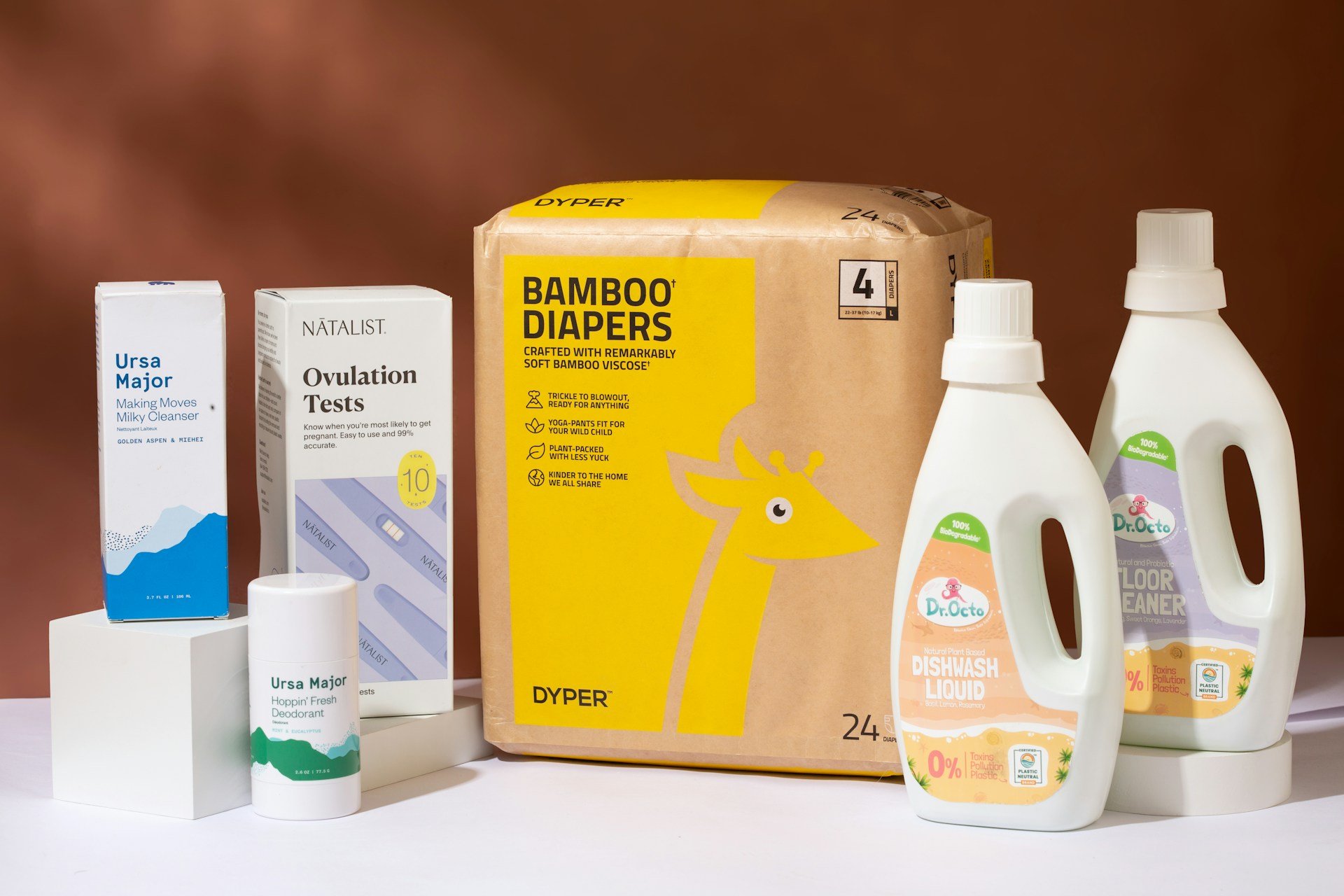How Baby Product Brands Can Leverage Onsite Search to Increase Conversions with Agentic Commerce Solutions

Key Takeaways
- Onsite search users generate disproportionate value, with just 15% of visitors using search yet accounting for 45% of revenue in eCommerce
- The baby products market is experiencing exceptional growth, expanding from $303.13 billion in 2024 to a projected $437.50 billion by 2030, representing a 6.31% CAGR
- Agentic commerce represents a massive opportunity, with projections showing $1 trillion in US revenue by 2030 and $3-5 trillion globally
- AI-powered search delivers measurable conversion advantages, with GEO achieving 13X conversions (27% vs 2.1%) compared to traditional search
- Traditional search fails most baby product shoppers, with 72% of websites failing to meet user expectations for site search functionality
- Personalization drives substantial revenue impact, with product recommendations accounting for up to 31% of revenues and single recommendation engagement increasing AOV by 369%
- Brand safety and compliance are critical differentiators for baby product brands implementing AI, requiring specialized guardrails for safety-critical recommendations
Baby product brands face a unique challenge: parents researching nursery furniture, feeding systems, or safety gear conduct intensive research driven by safety concerns and emotional investment in infant wellbeing. Traditional keyword search fails to capture the nuanced questions parents actually ask—"Is this car seat safe for a 6-month-old weighing 18 pounds?" or "Which baby lotions avoid parabens and synthetic fragrances?"
This disconnect creates massive opportunity. While site search users convert at 2-3X higher rates than non-search users, most baby product sites deliver frustrating experiences that send high-intent shoppers to competitors. Agentic commerce—shopping powered by AI agents that understand intent, anticipate needs, and guide purchase decisions—offers baby brands a path to capture this untapped conversion potential.
This guide reveals how baby product brands can leverage intelligent onsite search to transform product discovery, build parent trust, and drive measurable conversion improvements through AI-powered solutions.
Why Onsite Search Is Critical for Baby Product eCommerce Conversion Rates
The High-Intent Search Opportunity Baby Brands Are Missing
The economics of onsite search reveal a stark reality: baby product brands are failing their most valuable visitors. Despite only 15% of visitors using internal site search, these searchers generate 45% of revenue.
The conversion advantage is even more pronounced when search works properly. Site search users are 2-3 times more likely to complete purchases than browsers, and conversion rates through search can reach up to 50% higher than average site conversion rates. Amazon demonstrates the ceiling for search optimization—their conversion rate increases sixfold after users perform a search (2% → 12%).
Yet 72% of websites fail to meet user expectations for site search. For baby product brands specifically, this failure is particularly costly because:
Parental Purchase Behavior Patterns:
- Safety-critical decisions drive extensive pre-purchase research across multiple sessions
- Parents ask complex, conversational questions that keyword search can't interpret
- Trust verification through certifications and expert validation happens during product discovery
- Multi-product compatibility (bottles with pumps, car seats with strollers) requires cross-catalog understanding
- Age-appropriateness filtering demands developmental milestone knowledge
Market Growth Acceleration: The global baby products market growing at 6.31% CAGR represents expanding opportunity, but also intensifying competition. Baby cosmetics & toiletries alone command 34.2% market share ($103.69 billion in 2024), driven by rising parental awareness of infant health and increasing demand for premium, organic, and hypoallergenic products.
Brands that optimize search capture disproportionate share of this growth by converting high-intent parents when they're actively seeking specific solutions.
Understanding How Onsite Search Works: The Foundation of Product Discovery
Search Mechanics That Drive Baby Product Conversions
Effective onsite search for baby products requires fundamentally different architecture than generic eCommerce search. Parents don't search for SKUs—they search for solutions to specific childcare challenges.
Core Search Components for Baby Brands:
Intent Recognition and Query Understanding:
- Natural language processing for conversational queries ("what do I need for a newborn?")
- Semantic understanding that interprets "no chemicals" as hypoallergenic, fragrance-free, paraben-free
- Age-stage awareness (newborn vs. 6-month vs. toddler product filtering)
- Safety-first signal detection prioritizing certifications and testing validation
Typo Tolerance and Synonym Matching:
- Autocomplete that guides parents to proper product terminology
- Search autocomplete boosts sales by 24% through friction reduction
- Synonym libraries for baby-specific terminology (stroller = pram = buggy)
- Misspelling forgiveness for product searches during late-night feeding sessions
Product Attribute Filtering:
- Baby-safe materials search (BPA-free, phthalate-free, lead-free)
- Age-appropriate results based on developmental milestones
- Organic and hypoallergenic certification filtering
- Multi-variant product indexing for size, color, and compatibility options
How Site Search Differs from SEO Marketing
While external SEO marketing attracts parents to your site, internal onsite search determines whether they convert. The distinction matters for baby product brands because:
External SEO Focus:
- Capturing broad intent through Google rankings ("best organic baby lotion")
- Content marketing addressing parenting questions and concerns
- Building domain authority through expert validation and backlinks
- Driving initial traffic to category and informational pages
Onsite Search Optimization:
- Converting high-intent visitors already on your site
- Surfacing specific products matching detailed parent requirements
- Reducing friction in multi-product purchase journeys
- Enabling cross-sell and bundle discovery during active shopping sessions
The research shows GenAI browser traffic increased 4,700% year-over-year, with AI-sourced customers are 10% more engaged than traditional visitors. This shift makes intelligent internal search increasingly critical as parents begin product research in ChatGPT or Perplexity rather than Google.
Search Optimization Tools: Traditional vs. Agentic Commerce Approaches
Limitations of Legacy Search Solutions for Baby Products
Traditional search optimization tools built for general eCommerce struggle with baby product complexity:
Keyword-Based Search Limitations:
- Cannot interpret parent questions about safety, age-appropriateness, or ingredient concerns
- Require exact terminology matching that new parents don't possess
- Return zero results for conversational queries that don't match product titles
- Lack understanding of cross-product compatibility and system requirements
Faceted Navigation Constraints:
- Static filters can't adapt to individual parent priorities (organic vs. budget vs. convenience)
- Overwhelm rather than guide through thousands of baby product SKUs
- Miss implicit requirements (car seats for small vehicles, strollers for apartment storage)
- Don't surface critical safety information proactively
What Agentic Commerce Solutions Bring to Baby Product Discovery
Agentic commerce transforms static search into intelligent conversation. Rather than forcing parents to guess keywords, AI agents understand intent and guide discovery:
Intent-Driven Search Capabilities:
- Conversational query handling for complex parent questions
- Contextual understanding of safety priorities and developmental stages
- Proactive surfacing of certifications, testing data, and expert recommendations
- Cross-product compatibility recognition and bundle suggestions
Continuous Learning Architecture:
- Real-time adaptation to parent behavior patterns and seasonal trends
- Performance improvement based on what actually drives conversions
- Personalization that remembers previous research sessions across devices
- AI-sourced visitors spend 32% more time on site with 27% lower bounce rates due to reduced friction
The shift is already measurable: 44% of users who have tried AI-powered search now prefer it as their "primary and preferred" source for internet searching.
How Personalized Search Experiences Increase Baby Product Conversions
Personalization That Understands Parent Priorities
Generic product recommendations fail baby brands because parents operate with dramatically different priority hierarchies. One parent prioritizes organic ingredients above all; another focuses on budget; a third values convenience for apartment living.
Product recommendations account for up to 31% of eCommerce revenues, but baby product personalization requires understanding:
Parent Persona Signals:
- Eco-conscious parents: Emphasize organic certifications, sustainable materials, carbon-neutral shipping
- Safety-first families: Prioritize third-party testing, pediatrician recommendations, certification badges
- Budget-minded shoppers: Surface value bundles, subscription savings, multi-use versatility
- Convenience-focused parents: Highlight dishwasher-safe, machine-washable, quick-setup features
Lifecycle Stage Awareness:
- First-time parents need comprehensive starter bundles with educational content
- Experienced parents seek specific solutions to identified problems
- Multi-child families require compatibility with existing product ecosystems
- Registry builders want gift-appropriate items with clear value communication
The impact of effective personalization is substantial: sessions engaging with a single recommendation see 369% AOV increase ($44.41 → $208.33). For baby product brands, this translates to converting single-item purchases into complete nursery systems or feeding solution bundles.
Using Purchase History and Behavioral Data
AI for baby eCommerce becomes increasingly powerful as it learns from each interaction:
Behavioral Intelligence:
- Baby's current age inferred from previous purchases (newborn diapers → 6-month clothing)
- Replenishment pattern recognition for consumables (formula, wipes, diapers)
- Cross-category affinity learning (organic food buyers prefer organic skincare)
- Gift-giving intent detection for registry and baby shower contexts
Trust-Building Personalization:
- Proactive safety information for parents who viewed certification pages
- Ingredient transparency for shoppers who read product composition details
- Expert validation for research-intensive buying patterns
- Customer review emphasis for social-proof-driven decision makers
Personalized recommendations improve abandonment by up to 4.35% by reducing decision friction and building confidence during the purchase journey.
Handling Complex Queries: Personalized Gifts and Product Compatibility
AI Search for Gift-Givers and Registry Shopping
Baby product search must serve two distinct user types with different needs: parents purchasing for their own children, and gift-givers shopping for baby registries or showers. Traditional search optimization fails gift-givers who lack detailed product knowledge.
Gift-Giver Query Patterns:
- "Unique personalized gifts for twins under $100"
- "Baby shower gifts parents actually want"
- "Registry items the parents haven't purchased yet"
- "Heirloom quality baby keepsakes with name engraving"
AI Agent Advantages for Gift Discovery:
- Budget-aware filtering with quality assurance
- Uniqueness scoring to avoid duplicate registry purchases
- Personalization option surfacing (monogrammed blankets, custom storybooks)
- Gift-appropriate packaging and card message integration
The complexity of these queries—combining personalization, budget constraints, registry coordination, and uniqueness requirements—exceeds what keyword search can handle. AI agents that understand intent convert gift-givers who would otherwise abandon frustrating traditional search experiences.
Multi-Product Compatibility and System Building
Baby products rarely function in isolation. Bottles need compatible pump parts, car seats require base compatibility with specific vehicles, strollers need matching adapters for infant car seat attachment.
Compatibility Search Requirements:
- Cross-product system understanding (Medela pump → compatible bottles and nipples)
- Vehicle fitment data for car seats and bases
- Stroller accessory compatibility matrices
- Feeding system component matching
Parents asking "Which bottles work with my breast pump?" need immediate, accurate answers that traditional search can't provide. AI-powered search synthesizes compatibility data across product categories, surfacing complete system solutions rather than isolated components.
Reducing Search Abandonment: How AI Agents Answer Parents' Unasked Questions
Building Confidence Through Conversational Search
The unique challenge of baby product eCommerce is that parents harbor safety concerns they don't explicitly articulate in search queries. A parent searching for "crib mattress" may silently worry about SIDS risk, chemical off-gassing, or suffocation hazards without knowing how to formulate those concerns as search terms.
Proactive Safety Communication:
- Automatic surfacing of safety certifications relevant to product category
- Age-appropriateness guidance based on developmental milestones
- Material safety data for parents concerned about chemical exposure
- Third-party testing validation and expert recommendations
Trust-Building Information Architecture:
- Pediatrician endorsements and expert credentials prominently displayed
- Return policy clarity reducing purchase hesitation
- Installation and usage guidance addressing competence concerns
- Comparison tools helping parents evaluate options confidently
The shift from reactive keyword matching to proactive guidance reduces the cognitive load on overwhelmed parents researching hundreds of products. AI agents create what parents describe as "finally, someone who understands what I'm actually worried about."
Conversational AI for Complex Parent Questions
Parents don't search in keywords—they think in questions:
- "Is this car seat safe for a 6-month-old weighing 18 pounds?"
- "Why does this bottle leak and how do I fix it?"
- "Can I use this product from birth or do I need to wait?"
- "What's the difference between organic and hypoallergenic for baby skin?"
Traditional search returns zero results or irrelevant product listings. Conversational AI interprets intent, references product specifications and safety data, and provides direct answers that build confidence.
The conversion impact is dramatic: GEO delivers 13X conversions (27% vs 2.1%) compared to traditional search by meeting parents exactly where they are in the research journey.
Bundling and Cross-Sell Opportunities Through Intelligent Search
How Search Agents Increase Average Order Value
Baby product shopping naturally lends itself to bundling—parents building complete nurseries, feeding systems, or diapering solutions. Yet most search experiences surface isolated products rather than coordinated systems.
Bundle Discovery Through AI Search:
- Nursery furniture sets (crib + dresser + changing table)
- Complete feeding systems (bottles + sterilizer + drying rack + storage)
- Diapering essentials (diapers + wipes + cream + disposal system + changing pad)
- Starter kits for new parents (comprehensive newborn necessities)
AOV Impact Mechanisms:
- Complementary product surfacing during active search sessions
- "Complete the system" prompts when parents view individual components
- Budget-aware bundle recommendations maximizing value within parent constraints
- Subscription bundling for consumables (diapers + wipes + formula)
Research shows sessions engaging with product recommendations demonstrate 369% higher AOV, and intelligent search enables this bundling to occur naturally during product discovery rather than requiring separate recommendation widgets.
Smart Cross-Sell Based on Purchase Stage
Baby product needs evolve rapidly as infants develop. AI search that understands lifecycle stages enables proactive cross-sell:
Developmental Stage Cross-Sell:
- Newborn diaper buyers → 3-month clothing introduction
- 4-month formula purchases → 6-month solid feeding supplies
- Infant car seat owners → convertible car seat upgrade timing
- Crib users → toddler bed transition products
This lifecycle awareness transforms one-time buyers into long-term customers by anticipating needs before parents actively search for next-stage products.
Ensuring Brand Safety and Compliance in AI-Powered Baby Product Search
Compliance Challenges Unique to Baby Products
Baby products face stringent regulatory requirements that generic AI implementations can't navigate safely. The consequences of compliance failures—recommending products with recalled components, making unsubstantiated safety claims, or suggesting age-inappropriate items—damage brand trust permanently.
Regulatory Frameworks Requiring AI Guardrails:
- CPSC (Consumer Product Safety Commission) standards for juvenile products
- ASTM safety certifications for cribs, car seats, and high chairs
- FDA regulations for baby food and infant formula claims
- FTC advertising requirements for organic and natural product claims
- State-specific regulations (California Proposition 65 warnings)
Brand safety for baby requires specialized compliance frameworks built into AI architecture rather than applied as afterthoughts.
How AI Agents Maintain Brand Safety at Scale
The challenge of baby product compliance is scale—ensuring thousands of AI-generated recommendations maintain accuracy across evolving product catalogs, changing regulations, and diverse parent questions.
Multi-Layer Safety Architecture:
Input Validation:
- Age-appropriateness filtering preventing recommendations for wrong developmental stages
- Allergen and ingredient awareness for parents with specific health concerns
- Recall database integration automatically flagging or removing unsafe products
Output Verification:
- Certification claim validation against actual product testing documentation
- Safety language compliance with FTC and FDA requirements
- Brand voice consistency while maintaining factual accuracy
- Legal review integration for regulated product categories
Real-Time Monitoring:
- Continuous compliance checking across all AI interactions
- Immediate flagging of potential violations for human review
- 86% of AI citations come from brand-controlled sources, enabling direct content governance
The performance benchmark is zero tolerance: effective AI safety for baby products means zero compliance violations while handling thousands of conversations.
Measuring Search Performance: Metrics That Matter for Baby Product Brands
Key Performance Indicators for Onsite Search
Measuring search effectiveness requires tracking both conversion metrics and behavioral signals that indicate search quality:
Primary Conversion Metrics:
- Search conversion rate: Percentage of search users who complete purchases
- Search-assisted revenue: Total revenue from sessions including search interactions
- Add-to-cart rate from search: Conversion from search results to cart
- Average order value for searchers: Comparing searchers vs. non-searchers
Search Quality Indicators:
- Zero-result query rate: Percentage of searches returning no results (failure metric)
- Search refinement patterns: How many attempts before finding relevant results
- Search exit rate: Users abandoning site directly from search results
- Click-through rate from search: Engagement with presented results
Benchmarking Against Industry Performance
Understanding relative performance helps baby product brands assess opportunity size:
Industry Benchmarks:
- Site search users convert at 2-3X higher rates than browsers
- Search can deliver up to 50% higher conversion than site average
- 72% of websites fail to meet user expectations (opportunity indicator)
- Top performers achieve 6X conversion improvement through search optimization
Advanced Attribution: Beyond last-click metrics, effective measurement tracks search influence across multi-session parent journeys:
- First-touch attribution for initial product discovery
- Assisted conversions where search occurred in prior sessions
- Cross-device search continuity enabling mobile research → desktop purchase
- Incremental revenue specifically attributable to search improvements
The goal is proving that search optimization investments deliver measurable ROI through increased conversion rates, higher average order values, and improved customer lifetime value.
Implementation Roadmap: Deploying Agentic Search for Baby Product Brands
Pre-Implementation: Catalog Preparation
Successful AI search implementation begins with data foundation work:
Product Data Enrichment:
- Comprehensive attribute tagging (age range, materials, certifications, dimensions)
- Safety certification documentation and testing validation records
- Ingredient and material composition data for transparency
- Compatibility matrices for cross-product system building
- High-quality imagery including lifestyle and detail shots
Content Optimization:
- FAQ content addressing common parent safety and usage questions
- Product descriptions written for natural language search queries
- Expert endorsements and pediatrician recommendations
- Customer review integration showing real parent experiences
Compliance Documentation:
- Safety certification validation and audit trails
- Regulatory compliance documentation for all product claims
- Age-appropriateness guidelines based on developmental milestones
- Recall monitoring and automated product flagging systems
Launch Checklist for AI-Powered Search
Technical Integration (Weeks 1-4):
- Search infrastructure deployment and API integration
- Product catalog ingestion and attribute mapping
- User authentication and session management
- Analytics instrumentation for performance tracking
AI Model Training (Weeks 3-6):
- Initial model training on product catalog and parent query patterns
- Brand voice calibration and safety guardrail implementation
- Compliance review and legal approval for regulated categories
- A/B testing framework setup for performance measurement
Rollout Strategy (Weeks 7-8):
- Phased deployment starting with high-traffic category pages
- User acceptance testing with parent focus groups
- Performance monitoring and rapid iteration
- Early GEO adopters achieve 37-40% visibility increases through proper implementation
How Envive Delivers AI-Powered Search That Converts Baby Product Shoppers
Baby-Specific Safety Compliance Built into Every Interaction
While generic AI platforms struggle with baby product compliance, Envive's architecture is purpose-built for safety-critical recommendations. The platform's proprietary 3-pronged approach to AI safety ensures appropriate product suggestions that build parent trust:
Zero-Violation Track Record:
- Specialized compliance frameworks for baby and maternity products
- Age-appropriateness filtering based on developmental milestones
- Certification validation preventing unsubstantiated safety claims
- Real-time monitoring across thousands of parent conversations
Brand safety for baby requires understanding that parents prioritize safety over price, convenience, or brand loyalty. Envive's platform proactively surfaces safety certifications, ingredient transparency, and expert validation—exactly what builds the confidence that converts hesitant researchers into buyers.
Search and Sales Agents Working Together
Envive's unified platform architecture enables Search and Sales agents to learn from each interaction:
Envive Search Agent:
- Understands parental intent behind conversational queries
- Never returns zero results, even for complex personalized gift searches
- Continuously learns from customer behavior and product catalog updates
- Delivers relevant results without requiring exact keyword matching
Envive Sales Agent:
- 13x more likely to drive add-to-cart actions through intelligent guidance
- 10x improvement in purchases by removing decision friction
- Seamless bundle recommendations integrated into sales conversations
- Personalized shopping journeys that remember parent preferences across sessions
Measurable Performance for Baby Product Brands
Envive delivers documented results across baby and maternity eCommerce implementations:
Conversion Performance:
- 100%+ conversion rate increases for brands implementing AI-powered personalization
- $3.8M in incremental revenue from AI-assisted shopping journeys
- 11.5% conversion rate increase for premium baby product categories
- 38x return on spend demonstrating clear ROI
Implementation Advantages:
- Quick to train on baby product catalogs with specialized safety requirements
- Compliant product recommendations with zero violations
- Measurable performance lift within weeks of deployment
- Continuous learning that improves conversion rates over time
For baby product brands competing on safety, trust, and expert validation rather than just price, Envive's platform captures the AI conversion advantage while maintaining the compliance standards that protect brand reputation.
Frequently Asked Questions
What is the average ecommerce conversion rate for baby product brands?
Baby brands often convert below general ecommerce averages because purchases are safety-critical and research-heavy, but they also see outsized gains from better search. Site search users convert 2–3X higher than browsers, yet 72% of sites fail to meet expectations—leaving room for up to 6X conversion lifts with optimization. For baby brands, AI-powered search can reach 27% conversion vs 2.1% sitewide by addressing parent safety concerns directly.
How does onsite search differ from SEO marketing for baby products?
SEO brings parents to your site via Google and content (“best organic baby lotion”), while onsite search converts those already browsing (“hypoallergenic newborn lotion without parabens”). As GenAI-driven traffic grows 4,700% and AI-sourced customers are ~10% more engaged, parents increasingly start research in ChatGPT or Perplexity—making intelligent internal search essential to capture that intent.
What are agentic commerce solutions and how do they improve product discovery?
Agentic commerce uses AI agents to interpret intent, anticipate needs, and guide shoppers instead of forcing manual keyword search. For baby products, agents can factor in safety certifications, developmental milestones, and cross-product compatibility in one conversation, tapping into a $1T US / $3–5T global opportunity as parents ask questions traditional search can’t handle.
How can AI-powered search handle complex queries like “unique personalized gifts for twins”?
AI search breaks complex intent into components—budget, uniqueness, personalization, and twin-specific relevance—then ranks products across all of them at once. Instead of zero or generic results, AI agents surface options like custom twin storybooks or monogrammed sets under a defined price point, which is why 44% of users who try AI search now prefer it as their primary way to shop.
What compliance considerations exist when implementing AI search for baby products?
Baby brands need AI search that respects CPSC rules, ASTM standards (e.g., cribs, car seats), FDA guidance for baby food, FTC advertising rules, and state laws like Prop 65—not generic ecommerce defaults. Systems should validate certifications against real test documentation, block age-inappropriate items, integrate recall data, and keep ingredient claims accurate, with 86% of AI citations coming from brand-controlled sources to maintain governance.
How quickly can baby product brands see ROI from implementing intelligent search agents?
Most brands see 37–40% visibility lifts within a few months and early conversion gains in 30–60 days, with full ROI often landing in 6–12 months. The math is strong: 15% of visitors drive ~45% of revenue, site search can convert 50% better than average, and product recommendations influence up to 31% of revenue—with a single engaged recommendation boosting AOV by up to 369%.

Other Insights

Partner Spotlight: Andrea Carver Smith

Is AI a bubble — or the beginning of durable value?

Partner Spotlight: Siara Nazir
See Envive
in action
Let’s unlock its full potential — together.






